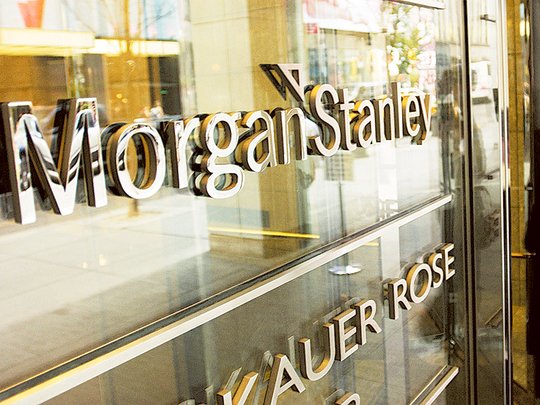
London: The wave of fines and lawsuits that has swept through the financial industry since the 2007/8 crisis has cost big banks $260 billion (Dh954.69 billion), new research from Morgan Stanley shows.
The analysis, which covers the five largest banks in the US and the 20 biggest in Europe, predicts the group will incur another $60 billion of litigation costs in the next two years.
Bank of America, Morgan Stanley, JPMorgan, Citi and Goldman Sachs have borne the brunt of the fines so far, collectively paying out $137 billion. They have another $15 billion to come in the next two years, Morgan Stanley said.
The top 20 European banks have paid out about $125 billion and have about $50 billion to come “albeit with a wide range”, the analysis said. “In the States . . . there have been more precedents on settlements and so as more banks have settled, the market’s ability to make a guesstimate of the amount for other banks has improved,” said Huw van Steenis, managing director at Morgan Stanley.
Mr van Steenis said the fines, which cover everything from foreign exchange rate rigging to US mortgage-backed securities and mis-selling of payment protection insurance in the UK, are having a profound impact on the banks.
“Litigation not only takes a bite out of your equity but has a much longer lasting impact on the amount of capital you need to hold,” he said.
The figures include fines and penalties banks have already paid, plus any provisions taken by June 30 for issues the groups see coming down the tracks, such as US mortgage fines that European banks expect to pay.
The report also charts what banks have done to reduce the risk of future litigation, but concludes that “lack of disclosure means it has been difficult for us to say definitively which firms have developed the best practices overall”.
Bank of America is spending $15 billion a year on compliance, Morgan Stanley said, while JPMorgan is spending $8 billion or $9 billion.
Van Steenis and his colleagues said they “struggled to obtain consistent data” on extra compliance costs in Europe.
The impact goes beyond the financial. “A lot of management time and IT budget has been focused on rectifying malfeasance rather than being able to position the bank for the future,” said Van Steenis.
“Banks’ ability to respond to new technology and new challenges generally has understandably been slowed down.
“In Europe, there’s still a nervousness on some mortgage settlements because no European bank has yet settled with the DoJ [Department of Justice] on mortgage,” he added.
So far, US mortgage issues accounted for $110 billion of litigation costs across the banks followed by PPI at $43 billion, foreign exchange rigging at $15 billion, money laundering at $15 billion and Libor/Euribor at $10 billion. Other future costs include civil suits on foreign exchange rigging, which lawyers have warned could cost tens of billions.
Bank of America has taken the most litigation charges, with $65.6 billion so far, followed by JPMorgan’s $42.4 billion and Lloyds £26.6 billion.
Actions taken by banks to prevent future litigation issues included everything from changing remuneration policies to a greater focus on “non-financial metrics”, adding compliance staff, to elevating chief risk officers to boards and using “robo surveillance” in trading rooms.
The US banks were more forthcoming than their European peers on changes they have made. An appendix showed that Barclays, Lloyds and RBS all failed to answer four of the seven questions posed by Morgan Stanley.
“What our review has shown is there isn’t an awful lot of disclosure,” said Van Steenis. “There were areas where quite a few people struggled to provide disclosure.”
— Financial Times











